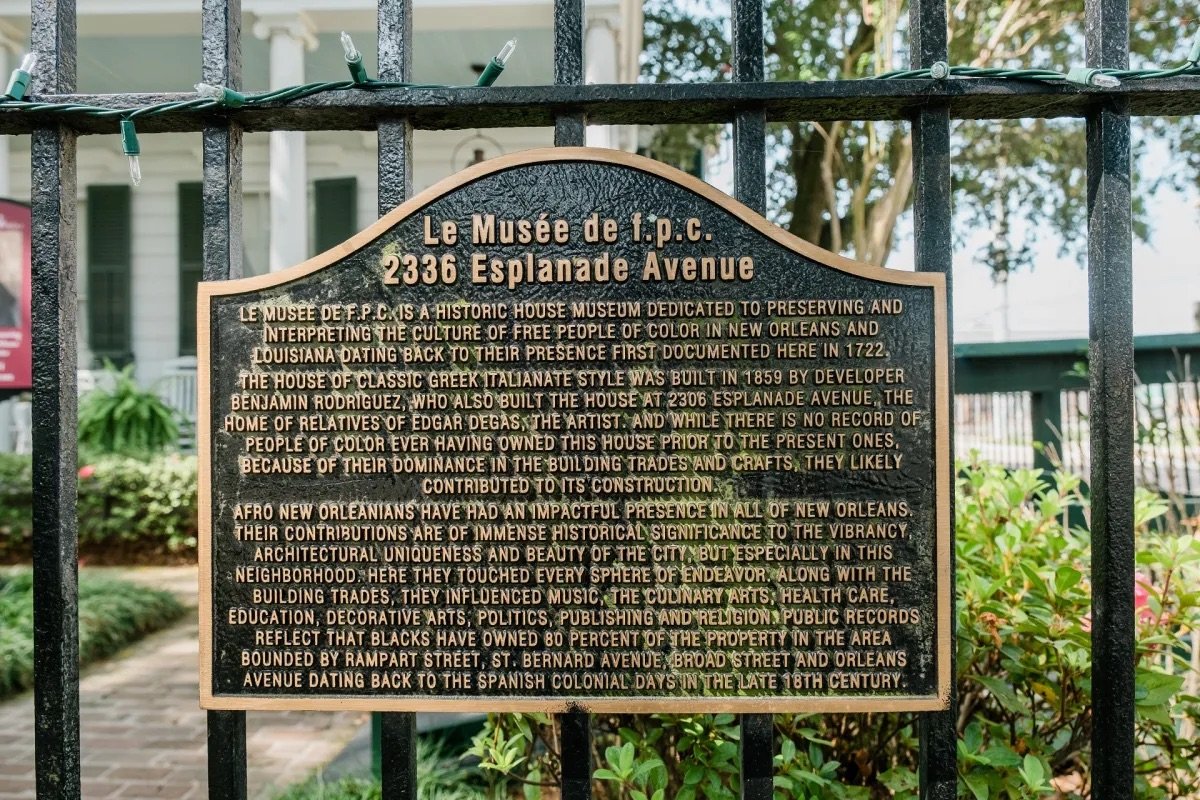Black Institutions Have Always Done More with Less, Persevering with Little Funding and No Pats on the Back
The narrative that positions institutions like the Whitney Plantation as paragons of resilience in the face of adversity is both misleading and harmful. It erases the longstanding struggles of Black-owned and Black-led institutions, which have always operated under conditions of scarcity.
A few weeks ago, a headline in the local daily praised Whitney Plantation for remaining “steadfast” in its commitment to telling Black history even as it faces major cuts in federal funding.
So, that’s what we’re doing now. Look we get it, at first glance, the feature comes off as a story about the institution’s commitment to its work, but that narrative got us to thinking – Why is this such a big deal? In fact, the article, in our opinion, completely misses the mark and the real story.
Of course, our issue is not with Whitney Plantation or the work that it does. But somebody had to say it. As the national conversation around diversity, equity, and inclusion (DEI) intensifies, institutions like the Whitney Plantation are lauded for their perseverance in the face of disinvestment and the rescinding of grants. Couched in the language of resilience and fortitude, this praise is presented as evidence of institutional commitment to truth-telling and historical reckoning.
But there is a huge problem with this narrative when Black-owned and Black-led institutions have long operated under the weight of chronic underfunding, marginalization, and systemic neglect.
While Whitney Plantation is frequently cited as a rare site in the American South that centers the experiences of enslaved people, its work is important, but it is not unique. Across the United States, Black-owned museums, archives, and cultural centers have been steadfast in their commitment to telling stories of truth and power—often with far fewer resources and far less recognition.
A Black-led, Black-owned institution dedicated to preserving and sharing the legacy and contributions of free people of color, Le Musee de f.p.c. understands all too well what it means to do more with less. A part of The McKenna Museums, the institution has plugged along for two decades without the benefit of federal grants and major funding.
In the article referenced, Whitney’s director Ashley Rogers laments that she is now forced to run a $5 million organization with a $3 million budget. Poor thing. Maybe she should call the folk at The McKenna Museums or the New Orleans African American Museum if she needs pointers on how to survive on a shoestring budget . . . then they can tell her about all the things they could only dream of doing with $3 million.
For decades, these institutions and organizations like them have been forced to do more with less, relying on the passion and dedication of staff and community members to keep their doors open. The financial precariousness faced by Black institutions is not an aberration. It is the norm. And yet, we rarely if ever see that story in the mainstream media.
According to the Institute of Museum and Library Services, Black museums and cultural centers receive a fraction of the philanthropic and governmental support allocated to their white-led counterparts. This disparity is not merely a matter of oversight—it is the result of entrenched systems of racial inequity that have shaped the cultural landscape of the United States since its founding.
When institutions like the Whitney Plantation are praised for plugging along despite financial setbacks, it is crucial to ask: who benefits from this narrative? Too often, such praise serves to obscure the ongoing struggles of Black institutions, reinforcing a hierarchy in which white-led or white-owned organizations are positioned as exceptional for enduring challenges that Black institutions have faced as a matter of course. Black institutions have always been at the forefront of truth-telling, often at great personal and collective cost. Their stories are not tales of exceptionalism, but of survival in the face of systemic neglect.
The language of resilience and perseverance, when applied selectively, can be weaponized to justify continued disinvestment. If institutions are celebrated for surviving deep budget cuts, what incentive is there for funders to provide the robust support that is truly needed? This logic perpetuates a cycle in which Black institutions are expected to do more with less, while white-led institutions are rewarded for meeting a lower bar of adversity. The result is a cultural sector that remains deeply unequal, both in terms of resources and in terms of whose stories are deemed worthy of preservation.
The dismantling of DEI initiatives has a disproportionate impact on Black institutions. These programs, while imperfect, have provided critical funding streams and opportunities for collaboration. As they are rolled back, Black institutions are left even more vulnerable, forced to compete for an ever-shrinking pool of resources. The rescinding of grants and the erosion of DEI commitments are not isolated incidents; they are part of a broader backlash against efforts to confront the realities of racism and inequality in American society.
Bottom line – the praise heaped upon institutions like the Whitney Plantation rings hollow. It is not enough to celebrate survival; we must demand justice. This means holding funders, policymakers, and the public accountable for the persistent underfunding of Black institutions. It means recognizing that the work of truth-telling and historical reckoning cannot be sustained on goodwill alone. It requires a fundamental reordering of priorities, one that centers the needs and voices of those who have been systematically excluded from the mainstream.
The narrative that positions institutions like the Whitney Plantation as paragons of resilience in the face of adversity is both misleading and harmful. It erases the longstanding struggles of Black-owned and Black-led institutions, which have always operated under conditions of scarcity. True progress will not be achieved by celebrating survival, but by confronting the structures that have made survival so difficult in the first place. Only then can we begin to build a cultural landscape that is truly equitable, inclusive, and just.


